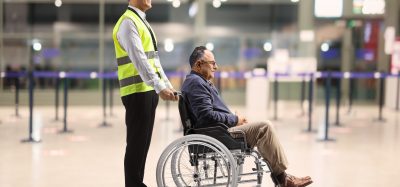Passenger Flow: Reducing ramp delay
- Like
- Digg
- Del
- Tumblr
- VKontakte
- Buffer
- Love This
- Odnoklassniki
- Meneame
- Blogger
- Amazon
- Yahoo Mail
- Gmail
- AOL
- Newsvine
- HackerNews
- Evernote
- MySpace
- Mail.ru
- Viadeo
- Line
- Comments
- Yummly
- SMS
- Viber
- Telegram
- Subscribe
- Skype
- Facebook Messenger
- Kakao
- LiveJournal
- Yammer
- Edgar
- Fintel
- Mix
- Instapaper
- Copy Link
Posted: 14 August 2013 | John-Paul Clarke, Eric Feron and Sang Hyun Kim, Georgia Institute of Technology | No comments yet
Passenger time and ramp delay can be significantly minimised by assigning airport gates. John-Paul Clarke, Eric Feron and Sang Hyun Kim from the Georgia Institute of Technology reveal the findings of their research into this important subject
Airport gates are valuable resources because they are the portals through which passengers enter and exit aircraft. Without gates (and the associated passenger boarding bridges, buses and passenger boarding stairs) airlines would have no orderly way to transfer passengers from the terminal building to their aircraft and vice versa. Given the Federal Aviation Administration’s forecast that the number of passengers will increase from 737 million in 2012 to 1,147 million by 20331, and the costs of airport construction as measured in terms of both money and litigation time, it is very likely that gates will become even more valuable in the not too distant future.
In addition to the aforementioned costs, which ultimately get reflected in the price of your ticket, the way in which aircraft are assigned to gates has a cost in terms of time. For example, if your departing aircraft is parked at the gate that is furthest away from your security checkpoint then the distance (and thus time) to get to your aircraft will be greater than the distance (and time) to get to other gates. Likewise, passengers who arrive at the northern-most gate of a north-south concourse and depart from the southernmost gate of that same concourse must walk the entire length of the concourse (the maximum distance and time) to get to their departing aircraft.
Passenger time and ramp delay can be significantly minimised by assigning airport gates. John-Paul Clarke, Eric Feron and Sang Hyun Kim from the Georgia Institute of Technology reveal the findings of their research into this important subject
Airport gates are valuable resources because they are the portals through which passengers enter and exit aircraft. Without gates (and the associated passenger boarding bridges, buses and passenger boarding stairs) airlines would have no orderly way to transfer passengers from the terminal building to their aircraft and vice versa. Given the Federal Aviation Administration’s forecast that the number of passengers will increase from 737 million in 2012 to 1,147 million by 2033, and the costs of airport construction as measured in terms of both money and litigation time, it is very likely that gates will become even more valuable in the not too distant future.
In addition to the aforementioned costs, which ultimately get reflected in the price of your ticket, the way in which aircraft are assigned to gates has a cost in terms of time. For example, if your departing aircraft is parked at the gate that is furthest away from your security checkpoint then the distance (and thus time) to get to your aircraft will be greater than the distance (and time) to get to other gates. Likewise, passengers who arrive at the northern-most gate of a north-south concourse and depart from the southernmost gate of that same concourse must walk the entire length of the concourse (the maximum distance and time) to get to their departing aircraft.


















